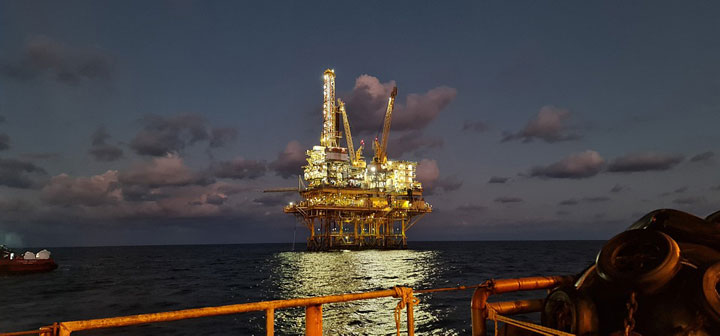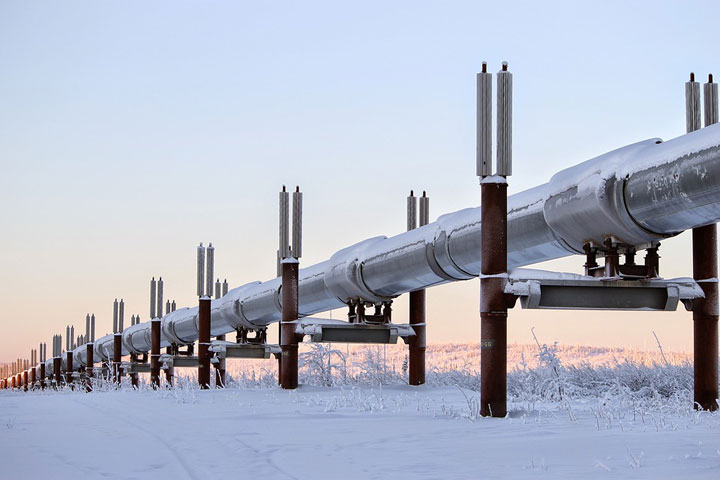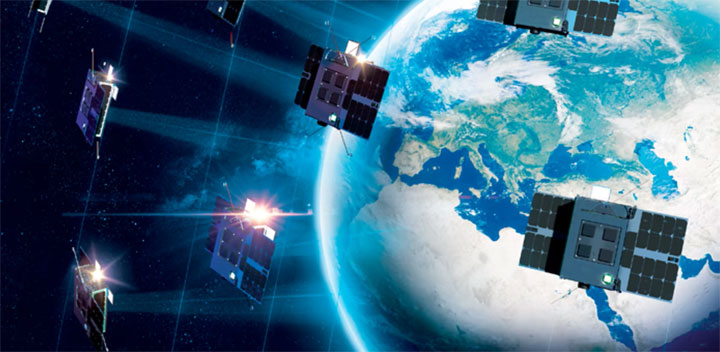ALEXANDRIA, Va. — The most basic requirement of IoT is that devices are connected wherever they are located. Yet only 15% of the planet has terrestrial coverage. Vast expanses of land and sea used by critical industries are cut off from terrestrial networks, including agriculture, mining, maritime, freight, logistics and utilities.
 Satellite IoT is helping industries monitor complex infrastructures to improve operational efficiencies, save costs, increase automation and enhance worker and environmental safety.
Satellite IoT is helping industries monitor complex infrastructures to improve operational efficiencies, save costs, increase automation and enhance worker and environmental safety.
Few experience the same disconnect as the oil and gas sector, which has made it a longtime user of satellite technologies. Long before it was called the Internet of Things, satellite was already playing a role in machine-to-machine (M2M) communication and Supervisory Control and Data Acquisition (SCADA) systems at oil rigs and other remote industrial sites.
For years, VSAT terminals were essentially the only way to reliably transmit and receive data. While VSATs are still recommended for large data transfers, second-to-second updates and SCADA telemetry, their size, high cost and energy consumption made it impossible to connect every desired location.
Manually monitoring hundreds of miles of pipelines or remote oil platforms was equally challenging. Sending crews to take infrequent observations was costly and came with workplace safety risks. Moreover, data collected manually by crews tend to have error rates between 5-10%, according to Hiber, a satellite IoT provider for oil and gas customers.
Today’s satellite IoT devices can be as small as a thumb drive with embedded antennas and configurations that allow them to run 5-10 years on a single battery, depending on data use and network optimization. Devices can also run in the tens of dollars making them more cost-effective to deploy for various use cases across the industry lifecycle, including tank and pipeline monitoring, wellhead monitoring, tracking assets, personnel safety, acoustic monitoring and others.
Of course, the benefits of satellite IoT are not limited to a single industry or use case. The current satellite IoT market has over 5 million subscribers and is expected to reach $1 billion within the next five years, according to IoT Analytics. By 2031, some analysts anticipate up to 39 million active terminals with a satellite IoT market valued at $6 billion—close to 2% of the projected global IoT market.
“The broader market will see huge growth over the coming years,” said Alan Crisp, a senior analyst with NSR. “This is driven by the new price points that can be achieved by these new smallsat architectures and lower launch costs, with typical price points on these new satellite operators shifting to just a few dollars per month, as well as substantially lower cost satellite terminals.”
Small Data, Big Impact
One of the big lessons of IoT is that small amounts of data make a big difference. In a survey of oil and gas companies, the Inmarsat Research Programme found a majority of respondents experienced increased staff productivity, greater automation, cost efficiencies, reduced downtime, improved environmental sustainability and improved safety as a result of IoT projects.
 Sensors connected directly to satellite regularly transmit various data on temperature, pressure, flow measurements, etc., helping operators manage miles of pipelines in hard-to-reach areas.
Sensors connected directly to satellite regularly transmit various data on temperature, pressure, flow measurements, etc., helping operators manage miles of pipelines in hard-to-reach areas.
In an asset-heavy industry with complex facilities, even marginal efficiencies add up to cost-savings, improved safety and environmental impact. According to data cited by OQ Technology, oil and gas companies lose $2.5 trillion each year on pipeline and tank corrosion. Oil leaks in the United States alone account for $2 billion in annual losses and unmonitored oil and gas wells were responsible for emitting over 280 kilotons of methane in 2018.
The environmental consequences are increasingly the subject of international government regulations. IoT sensors and control devices can help address long-term sustainability goals and emissions reduction targets. They are also critical in pinpointing the source of a problem before it becomes a hazard, improving operator response times, reducing downtime and saving on operating expenditure.
Growing Partnerships
At least 13 startups and seven established satellite operators have launched or announced plans to deploy satellite IoT networks in recent years. Lower costs to build and launch satellites, inexpensive sensors and network standards that enable direct-to-device connectivity have created a variety of solutions and helped ease adoption by leading industry players.
In recent years, several major oil and gas companies have announced partnerships with satellite IoT startups. In 2021, Hiber struck a deal with Shell for global well integrity monitoring solutions at up to 250 remote and offshore wellheads. Hiber was acquired earlier this year by Astrocast, an IoT nanosatellite operator with a fleet of 80 nanosatellites.
Also in 2021, Wyld Networks began a pilot program with Chevron to enable remote sensor connectivity within the oil and gas giant’s IoT infrastructure. The partnership is aimed at providing “insight and information to help reduce equipment downtime and enable preventative maintenance within complex energy infrastructures,” Wyld CEO Alastair Williamson told Constellations.
 Wyld Networks provides direct sensor-to-satellite connectivity for sensors and devices in remote locations. File photo shows a depiction of a Eutelsat constellation outfitted with Wyld IoT terminals. (Source: Eutelsat)
Wyld Networks provides direct sensor-to-satellite connectivity for sensors and devices in remote locations. File photo shows a depiction of a Eutelsat constellation outfitted with Wyld IoT terminals. (Source: Eutelsat)
Wyld plans to deploy its commercial sensor-to-satellite connectivity by the end of the year. It will have access to four satellites and will utilize the LoRaWAN protocol with long-range frequency hopping spread spectrum.
Throughout the rest of the decade, Williamson anticipates a rapid expansion of satellite IoT in conjunction with the broader digitization of all aspects of business. “In the energy sector, Wyld anticipates that the 2+ million kilometers of global pipeline alone will deliver billions of bits of data annually, enabling efficiencies such as reduced site visits, reduced downtimes and improved predictive maintenance,” he said.
Satellite-to-Sensor Networks
A single LEO satellite can collect data from thousands of connected devices every 24 hours, with larger constellations able to collect data hourly. LEO satellites are typically seen as the best option for environmental and asset monitoring applications, which send small data packages and generally require one IoT device per modem. With broader coverage areas and more power, GEOs are well suited for more data-intensive applications, like location monitoring, SCADA telemetry and monitoring backhauls. GEO can also support multiple IoT devices per modem.
Not every IoT solution connects directly to a satellite, many route sensor data to a gateway and then uplink it to the satellite. Some devices offer two-way communication and others one-way.
 There are different communication protocol for satellite IoT devices with various tradeoffs. LoRaWAN and NB-IoT are commonly seen as the two leading standards.
There are different communication protocol for satellite IoT devices with various tradeoffs. LoRaWAN and NB-IoT are commonly seen as the two leading standards.
Newer satellite IoT devices utilize common chipsets and typically operate on standardized network architectures to deliver services. LoRaWAN and NB-IoT (Narrow Band IoT) are the two most common standards. There is active debate around the benefits and tradeoffs of each standard in terms of data rates, energy consumption, link budget and interoperability.
LoRaWAN is an open standard developed by the LoRa Alliance and recognized by the International Telecommunications Union. It’s optimized for ultra-low power, long-range applications in the licensed and unlicensed sub-GHz spectrum. It is one of the dominant players in the IoT space and was recently updated to feature a Long-Range Frequency Hopping Spread Spectrum (LR-FHSS) extension to enable increased network capacity and reduce interference between the growing number of connected devices.
NB-IoT for non-terrestrial networks was integrated into Release 17 of the 5G standard and is recognized by 3GPP. It uses licensed spectrum and enables crossover between satellite and terrestrial mobile networks. As designed, the standard enables unmodified commercial NB-IoT devices to send and receive information via satellite or terrestrial networks, without additional hardware.
The 5G standard for NB-IoT is still relatively new and has not yet played a significant role in expanding the market for satellite IoT. That could change as the technology evolves, Crisp told Constellations. “Moving forward there are new constellations which will permit devices to roam between terrestrial networks and satellite networks on a single chipset, reducing costs and technical complexity in using multiple network types.”
Explore More:
Podcast: LEOS, IoT and M2M Communications
How Satellite Became a Part of 5G
Podcast: Industrial IoT, Cubesat Constellation and Getting VSATs to Work with LEO
5G Outlook and Update with Tom Stroup, President of the Satellite Industry Association
